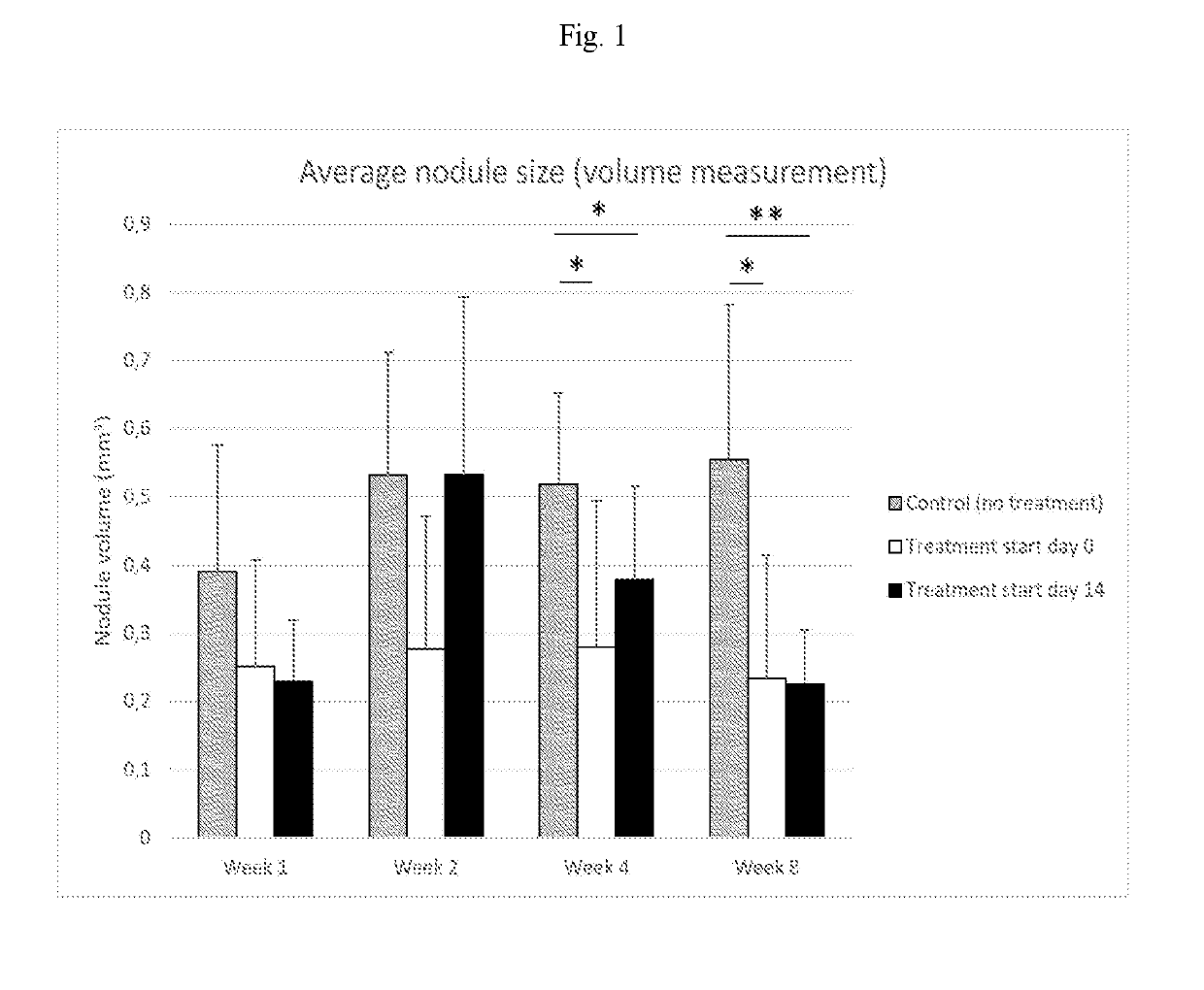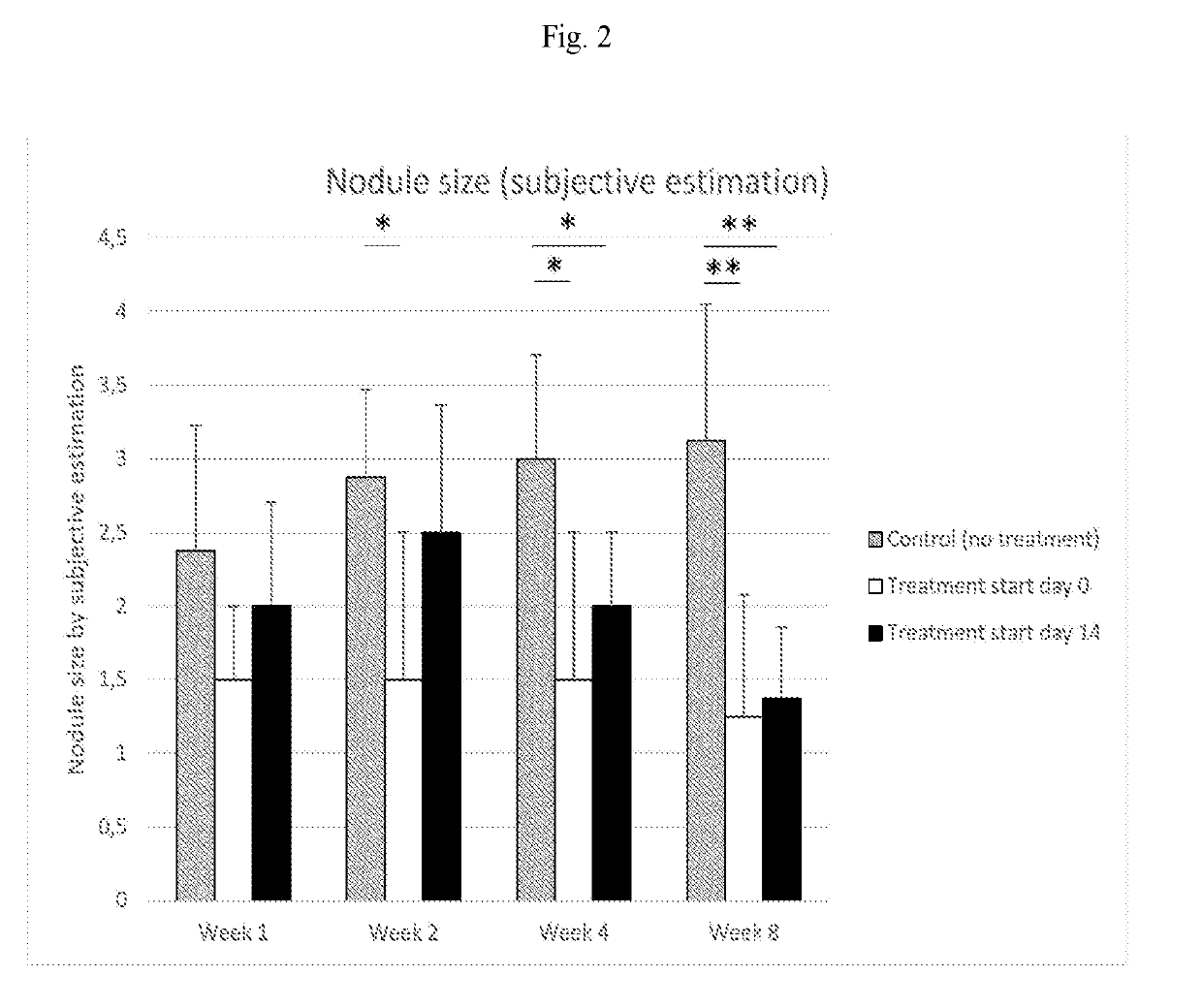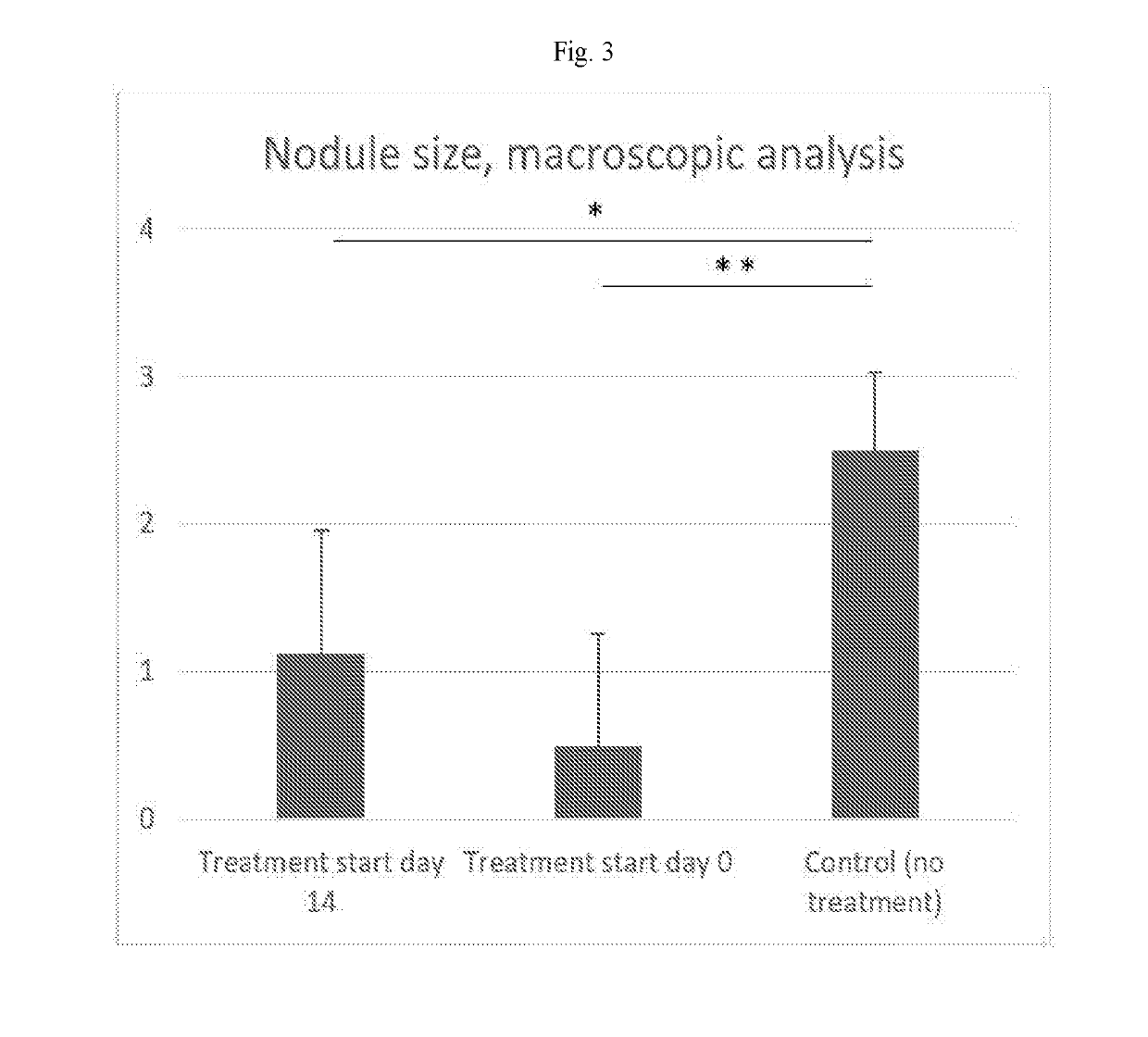Methods and compositions for the treatment of intervertebral disc herniation
- Summary
- Abstract
- Description
- Claims
- Application Information
AI Technical Summary
Benefits of technology
Problems solved by technology
Method used
Image
Examples
example 1
dy, Treatment with Abatacept
[0062]20 female Sprague-Dawley rats weighing approximately 225 g were evenly divided into two groups: disc puncture (DP, n=10) and disc puncture+abatacept (DP+abatacept, n=10). The rats were housed with free access to food and water in environmental-enriched cages. All rats underwent the same surgical procedure as described below.
[0063]Anesthesia was induced and maintained by the inhalation of Isoflurane. A single dose of 0.05 mg / kg buprenorphine (Temgesic®) was administered subcutaneously before the procedure for per- and postoperative analgesia.
[0064]Following induction of anesthesia, a skin incision of approximately 6 cm was made in the midline over the spinous processes of the lumbar and caudal spine. The spinal muscles on the left side of the lumbar spine were dissected to expose the left L4 / L5 facet joint. The left L4 / L5 facet joint was removed to expose the underlying dural sac, L4 nerve root and L4 / L5 intervertebral disc. The disc was then punctur...
example 2
nal Assessment of Nodule Size, Treatment with Abatacept
[0069]The purpose of this study was to assess 1) how the nodule formed after disc puncture in the rat varies in size over time, 2) if the formation of the nodule can be inhibited by administration of the T-cell inhibitor abatacept, and 3) if the size of existing nodules can be reduced by administration of the T-cell inhibitor abatacept.
[0070]24 female Sprague-Dawley rats (n=24) weighing approximately 225 g were evenly divided into three groups: Control group (no treatment, n=8); Treatment start day 0 (n=8); and Treatment start day 14 (n=8). The rats were housed with free access to food and water in environmental-enriched cages. All rats underwent the same surgical procedure as described below.
[0071]Anesthesia was induced and maintained by the inhalation of Isoflurane. A single dose of 0.05 mg / kg buprenorphine (Temgesic®) was administered subcutaneously before the procedure for per- and postoperative analgesia.
[0072]Following ind...
example 3
nal Assessment of Nodule Size and Immunohistochemistry, Treatment with Specific Inhibitor of CD28-Mediated Co-Stimulation of T-Cells
[0081]The purpose of this study is 1) to reproduce previous results indicating that treatment with a specific inhibitor of CD28-mediated co-stimulation of T-cells can be used to induce and / or expedite resorption of disc hernias in the modified animal model described in Example 3, and 2) to make a more detailed assessment of specific morphological changes in the hernia-like nodules caused by treatment with a specific inhibitor of CD28-mediated co-stimulation of T-cells.
[0082]48 female Sprague-Dawley rats weighing approximately 225 g are evenly divided into three groups: Control group (Control, n=16); low dose treatment (T-L n=16); high dose treatment (T-H, n=16). The rats are housed with free access to food and water in environmental-enriched cages. All rats undergo the same surgical procedure as described below. The researcher performing the surgery is ...
PUM
| Property | Measurement | Unit |
|---|---|---|
| Fraction | aaaaa | aaaaa |
| Mass | aaaaa | aaaaa |
| Dimensionless property | aaaaa | aaaaa |
Abstract
Description
Claims
Application Information
 Login to View More
Login to View More - R&D
- Intellectual Property
- Life Sciences
- Materials
- Tech Scout
- Unparalleled Data Quality
- Higher Quality Content
- 60% Fewer Hallucinations
Browse by: Latest US Patents, China's latest patents, Technical Efficacy Thesaurus, Application Domain, Technology Topic, Popular Technical Reports.
© 2025 PatSnap. All rights reserved.Legal|Privacy policy|Modern Slavery Act Transparency Statement|Sitemap|About US| Contact US: help@patsnap.com



